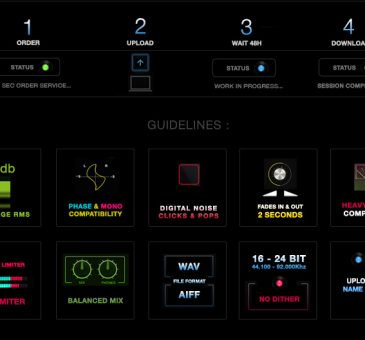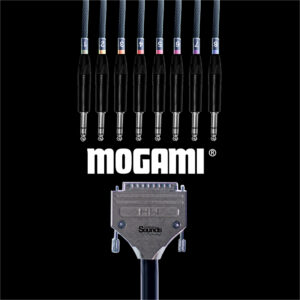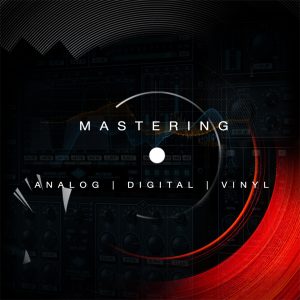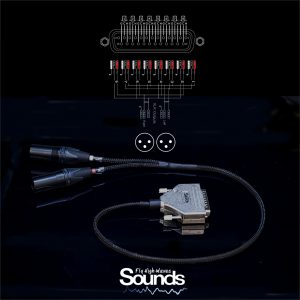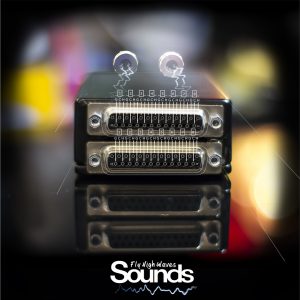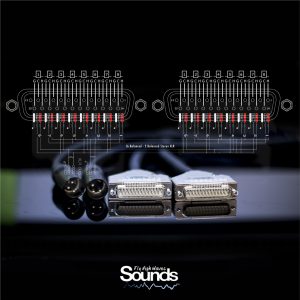Sending Tracks for a Mastering Service (Guidelines Explained)
Studio setup combines the accuracy of digital and the character of analog processing to give your masters the benefit of both worlds. We call it hybrid mastering. By reading about our proach you can better understand the overall process and be more aware of all process benefits.
Here are some processes that we might use:
- Audition / Critical Listening
- An evaluation of how individual tracks sound in a sequence / in relation to each other.
- Compression – Multi-band / Full-band, Series / Parallel
- Equalization – Shelving, Parametric, Filtering
- Limiting – Multi-band / Full-band, Soft Clip / Hard Clip
- Expansion – Multi-band / Full-band, Series / Parallel
- Harmonic Exciting
- Stereo Width Adjustment
- Editing – Cuts, Fades, Edits, Volume Automation
- Restoration – De-noise, Click/Pop Removal
- Album sequencing, track names, and ISRC codes are added.
- Space can be added at the beginning and end of tracks
- Better fades are implemented for smoother transitions
- Key benefits of the Mastering process. Our main goals.
- Preparation for Distribution
The final step usually involves preparing the song or sequence of songs for download, manufacturing and/or duplication/replication. This step varies depending on the intended delivery format. In the case of a CD, it can mean converting to 16 bit/44.1 kHz audio through resampling and/or dithering and setting track indexes, track gaps, PQ codes, and other CD-specific markings. For web-centered distribution, you might need to adjust the levels to prepare for conversion to AAC, MP3 or hi-resolution files and include the required metadata. There is no doubt that adding mastering to your project will improve the quality of your music. Without it, your chance of making it in the highly competitive music industry decreases dramatically. For such a big responsibility and amount of expertise, hands-on work and time & affordable rate these days there is no argument: mastering is a necessity.
- The process can be applied single mixdowns, groups or sum signals (Stems).
Mastering usually works with the final stereo mixdowns but can also take the form of stem mastering. This utilizes groups of instruments (i.e. drums, bass, guitars, vocals) to further enhance the result. Mastering is very different from mixing which is where the multi-tracks or sequenced elements of the music are individually equalized, compressed, effected, automated and leveled.
Stem mastering is a type of mastering that differs in that it uses ‘groups’ of instruments such as bass, guitars, drums, keyboards, vocals. There are a number of advantages to stem mastering. The ‘collections’ of instruments allow the mastering engineer to create a master with more targeted corrections and enhancement to the equalization, dynamics, depth and balance of the instruments in mixdown.
- Emphasize the sound character of instruments.
Stem mastering affords additional scope to target specific problems and further increase the subjective enhancements and apply an “expensive” sound to the production.
- Unmasking of overlapping sounds.
Mastering is normally capable of adding space, depth, punch, thickness, perceived volume increases, warmth, air (sparkle) and other global tonal changes, to a mix.
- Consistency Across an Album
Consideration also has to be made for how the individual tracks work together when played one after another in an album/release sequence. Is there a consistent sound? Are the levels matched? Does the collection have a common “character” and playback evenly so that the listener doesn’t have to adjust the volume? Coherency throughout the track listing is achieved through the process of level matching, compression, and volume consistency. Taking on this process yourself, without the appropriate ear or experience, can often leave an album sounding flat. A professional will help make each track shine by itself, while also creating a tonally refined collection. EQ is leveled out to give the album its own consistent sound throughout as opposed to each song sounding like it was recorded and mixed at different times and places.
- Professional Sound.
There are many alternatives these days to the handful of true high-end mastering studios which used to encompass the market. Whilst genuine mastering equipment is still very costly, there is now a range of more affordable options mainly in the form of computer plug-ins which has resulted in the explosion of mastering services operating today, mainly offering online mastering at sometimes very low prices, and all of them claiming to be “professional” and – that phrase again – “high-end”. The first benefit of professional mastering comes with experience. A professional has spent years defining tracks and pulling out the winning parts. A professional can also help you go that extra step, finding techniques and sounds that work with your ideal sound and manipulating your work to ensure the right tone is achieved. Finding an expert on the same page as you in this respect is invaluable. A professional mastering engineer will add value to your musical releases without leaving anything to chance.
- The Sound of a Record
The goal of this step is to correct mix balance issues and enhance particular sonic characteristics, taking a good mix (usually in the form of a stereo file) and putting the final touches on it. This can involve adjusting levels and general “sweetening” of the mix. Think of it as the difference between a good sounding mix and a professional-sounding, finished master.
- Quality Control
Long, tiring mixdown sessions mean that details can be missed, it may be that you miss a click or a pop in a mix and this is best removed before it is heard by your listeners. Some mix down environments may not benefit from high resolution, large format loudspeakers in an acoustically treated room. This means that there can be sonic inaccuracy that needs correction before release.
- Improve spatial impression | Sonic Enhancement
- Unwanted Sounds Check / Hum / Clicks / Pops / Disontinuity
- Translation on wide reproduction systems
- Add presence and transparency to mixes. Depth, punch, clarity
There’s also the hard truth that better equipment really does equal better results. You can hack your way through free trial software or an old mixing station, but today’s top of the range technology still produces the clearest, punchiest results. Unfortunately, it’s rare you’ll find this gear lying around so submitting your work to a professional with access to, and deep knowledge of, the latest technologies will give your tracks the best possible starting position.
- Emphasize the sound characters of instruments.
- Glue the mix / Increase loudness & focus.
Your mastering engineer may also use compression over the track, and there are many types and approaches to dynamic processing so that it can be used to add punch and fatness or to hold a lead element in place on the top of the mix, or simply to add that bit of “glue” that holds a mix together.
When done correctly, the dynamics and impact will remain largely intact while your tracks become comparable in perceived level compared to most commercially released songs.
When done poorly, your tracks can end up sounding overly loud, harsh and draining, or even small and crunchy, with little to no dynamics present. flattening effect on your music, as the gentle parts of your songs sound as if they’re at the same volume and intensity level as the energetic sections, sucking the life out of what should be the most impactful moments in your tracks.
Be sure to select the loudness vs. dynamics balance with your mastering engineer or select the range during the wizard steps the top of your session.
- Online Delivery & Consultation.
Our mastering process is human based and through a beautiful wizard, we will guide you through all the options available. Even in attended mastering sessions is difficult to say what you want and what you don’t want without sounding demanding and to be understood. Not everybody has the language to understand all the terms and the processes involved, what options you have and what you missed out that nobody told you about, …what are the cost and extra fees. Many artists and producers have told us of previous experiences where they have invested time and money into a mastering session only to find that the results did not live up to their expectations. We at Fly High Waves Sounds recognize that there is any number of ways to master a recording and it’s important for us to establish what you are looking for in your music.
- Personal Storage Backup.
The result will be returned online, in your dedicated folder, by e-mail or via mail service in case of an archive disk or vinyl lacquer etc. In the same time, you can find your masters or delete them after the download. You can keep them as a backup and you will find them there later and in some cases, we can use the masters as a reference for your further mastering projects.

Submission Guidelines explained:
How do I prepare for mastering?
- File Formats
When you bounce or export your mix downs out for mastering please bounce at 24-bit resolution and at the existing sample rate of your DAW session. The files should be stereo .wav or .aif files. You can also bounce to 32 bit but there is no sonic advantage over 24 bit for the purposes of mastering. Just orchestral music may benefit.
- No Limiter if is possible
Before you bounce your mixes ensure you bypass any limiter plugin on your software master bus. After doing so ensure you check for any clipping (signal peaks that exceed zero). If you do see clipping, rather than adjust your mix gain structure please simply pull down the master fader by the amount that is needed to resolve any occurrences of clipping. You can then export the files at 24-bit resolution.
- Name & Titles
Files should be named with the track and artist name and a date which is useful for all to know. Files should be zipped up using Winrar, Winzip and uploaded using a suitable online file transfer website or directly to our wizard or user folder. It is also a good plan to prepare a .rtf text document with the track running order, track name, artist name(s) and any subcode information that will be inserted into the final medium such as ISRC codes. This should be sent to the mastering engineer with the audio files.
- Stem Mastering:
When you prepare for stem mastering you need to ensure that all the groups (or stems) are of exactly the same length. In your digital audio workstation, you set locators at the beginning and end of the tracks (ideally with a 2-second pre and post-roll at each end of the bounce/export to avoid cutting off reverb tails etc.) The engineer will require 24-bit files and they should be stereo interleaved files. This way when the mastering engineer receives the files they can be imported and lined up on multiple tracks so they will all play perfectly in synchronization.
Ideally, when you have exported your stems you would import them into your own sequencer and check that they sound the same as your mixdown. If so they are ready to send to the mastering engineer. Some people may have been mixing into a limiter which causes a complication because stems need to be unlimited when they are exported (preserving the punch and dynamics of the tracks). The originally summed mix down will have been affected globally by the limiter on the stereo master output. If you were to export the stems through a limiter via the stereo output (as is often the case) each stem will be limited in a different way because the stems are exported in isolation.
In this case, we recommend exporting the stems without the limiter and also provide a stereo limited mix down so it is possible to gauge how much limiting was applied to the overall mix, this gives some insight to what was being heard during mixdown and can help identify any specific problems you may have been having. Mixing into a limiter is not at all ideal but it provides another layer of information during mastering if a stereo limited mix is provided along with the stems at the time of stem mastering.
- Final thoughts:
Most musicians and bands are aware of the benefits of professional audio mastering, the final stage where a mastering engineer with considerable experience will enhance, quality control and optimize a piece of music before it’s release. Mastering is usually performed using a 24-bit stereo interleaved file, the result of the producers/engineers final mix down.
Mastering engineers have various professional engineering backgrounds and it is comforting to know that your engineer has had plenty of mixing experience when considering whether to try stem mastering for your music projects.
What Sets our Mastering house Apart
Our engineers have a lot of experience behind the console. One main engineer is specialized in electronic music and has the experience of playing in the underground scene on vinyl and digital, releasing music and also running an electronic music label. The second one has worked as professional musicians, mix and post-production engineers for the top labels in the recording industry. Our blend of music business experience and perspectives gives us a unique insight to lean on during every project. Mastering music is what we do every day. Our mission is simple: to give you the best quality mastering service there is. After all, we’d like you to come back.
- Client Input:
Using the beautiful wizard that we created.
This varies from job to job, some clients provide a list of pointers and instruction on a track by track basis and some clients just allow the mastering engineer to do his work and do the best for the music with a completely fresh and unhindered approach. Of course, there are some jobs that have a combination of the 2 with some basic guides or sonic references for the engineer to work. Is the reason why we designed our mastering wizard interface with steps which will inform us about all the aspects of the process you want to be included. Other aspects will be added along the way based on the project. We can be in permanent contact for the best direction.
Contact us to discuss your project details and get your free mastering sample. As well we will take pleasure to discuss your music project and even to point you to learn more or to help you in your process.


